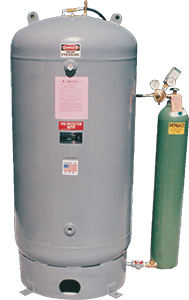Minimum Prescriptive Standards

The 2018 International Residential Code (IRC) requires all new one-and two-family dwellings and townhouses to be protected by automatic fire sprinklers. This basic level of fire safety is considered the minimum prescriptive level of fire protection for everyone. Then, upon local adoption, 48 states choose to not provide that minimum basic state requirement without any justification other than cost. This is simply a blatant disregard for minimal statewide safety measures and jeopardizes the health and wellbeing of those less fortunate communities. Maryland and California remain the only two states to fully adopt the national minimum standard for residential automatic fire sprinklers in single family homes and townhouses.
2018 International Residential Code
R313.1 Townhouse automatic fire systems. An automatic residential fire sprinkler system shall be installed in townhouses.
R313.2 One- and two-family dwellings automatic fire systems. An automatic residential fire sprinkler system shall be installed in one- and two- family dwellings.
While there are times that exceptions to the minimum standard will need to be considered, they should not be the governing rule. Recently, Maryland lawmakers had this very situation when considering a new home permit exemption request of the state residential automatic fire sprinkler requirement. Carroll County, Maryland was recently petitioned for an exemption for a new home being built in an Amish community. The home would not be connected to an electrical utility source nor would it be heated for system protection, both of which are required for traditional automatic residential fire sprinkler systems. While there are several manufacturers that produce gas powered self-contained systems with water tanks, they often add cost to the overall system and a level of technical complexity. This was argued as it violates the prescribed Amish religious values that prohibit the use of many modern world technologies within their homes. In this case, the local authority having jurisdiction chose to exempt the homeowner from the requirement, while continuing to maintain the integrity of the overall requirement for automatic residential fire sprinklers in all new homes built in Maryland.

Gas powered fire water supply systems for fire protection in areas without power or water supply.
Is this Pandora’s Box or is it simply an exception the rule? While any exception must be considered a potential hazard to life and property, we must also consider all factors when implementing rules. That is the main reason we have prescriptive and performance modeling requirements. Prescriptive are fixed on standard construction methodologies and current modern-day materials, rather than using performance-based criteria as the base model. Prescriptive requirements are used primarily for design and installation in new construction, as it is easier to coordinate current building techniques and material with the current minimal requirements. In performance modeling, we evaluate fire protection performance though simulating various configurations based on the design of the building and systems. While both are minimum standards, the performance model is often the go-to for existing buildings that need more flexibility in meeting that minimum level of safety.
Not all things fit those prescriptive or performance models and will need to be evaluated individually by the Authority Having Jurisdiction, as with the case discussed earlier. That, however, does not negate the requirement for a minimum level of safety or the implementation of some form of equivalency for safety. When considering where these individual exceptions might lie, we must also be committed to the concept that the alternative must meet the intended minimal level of safety.
